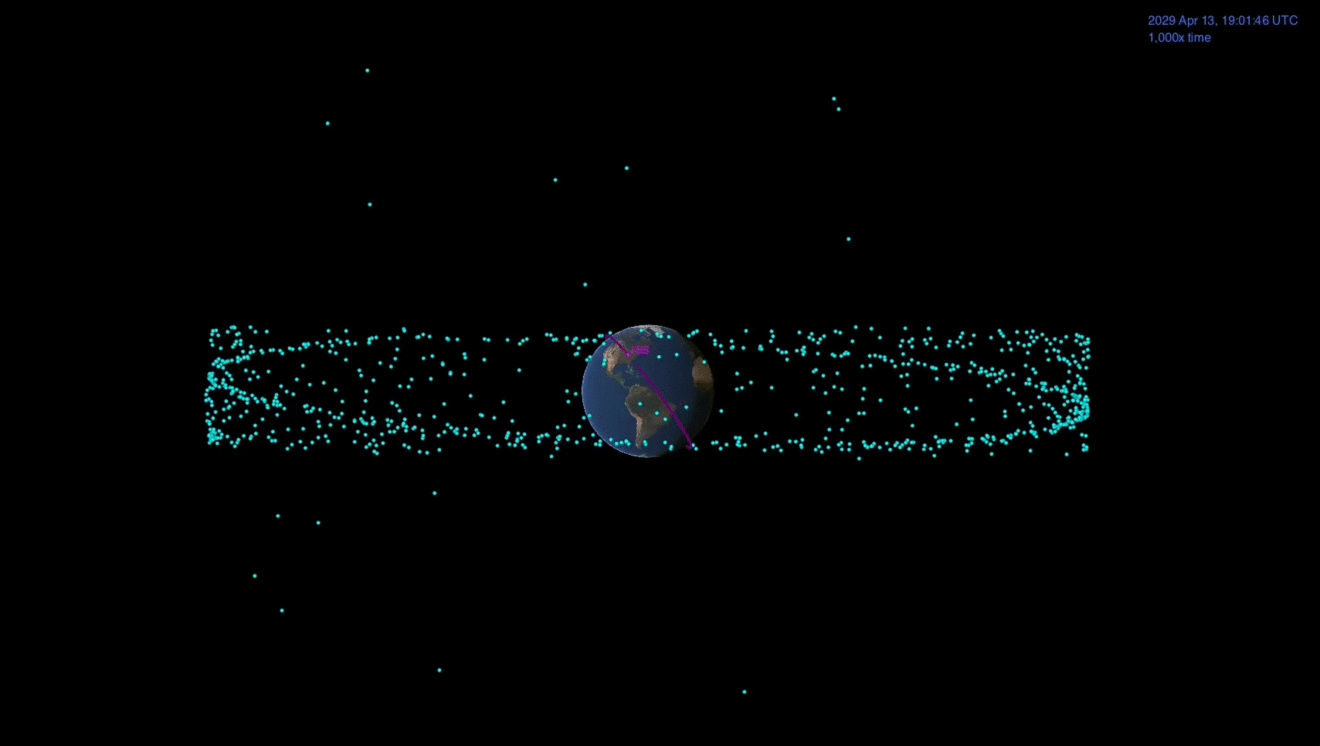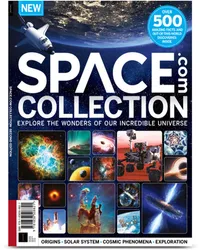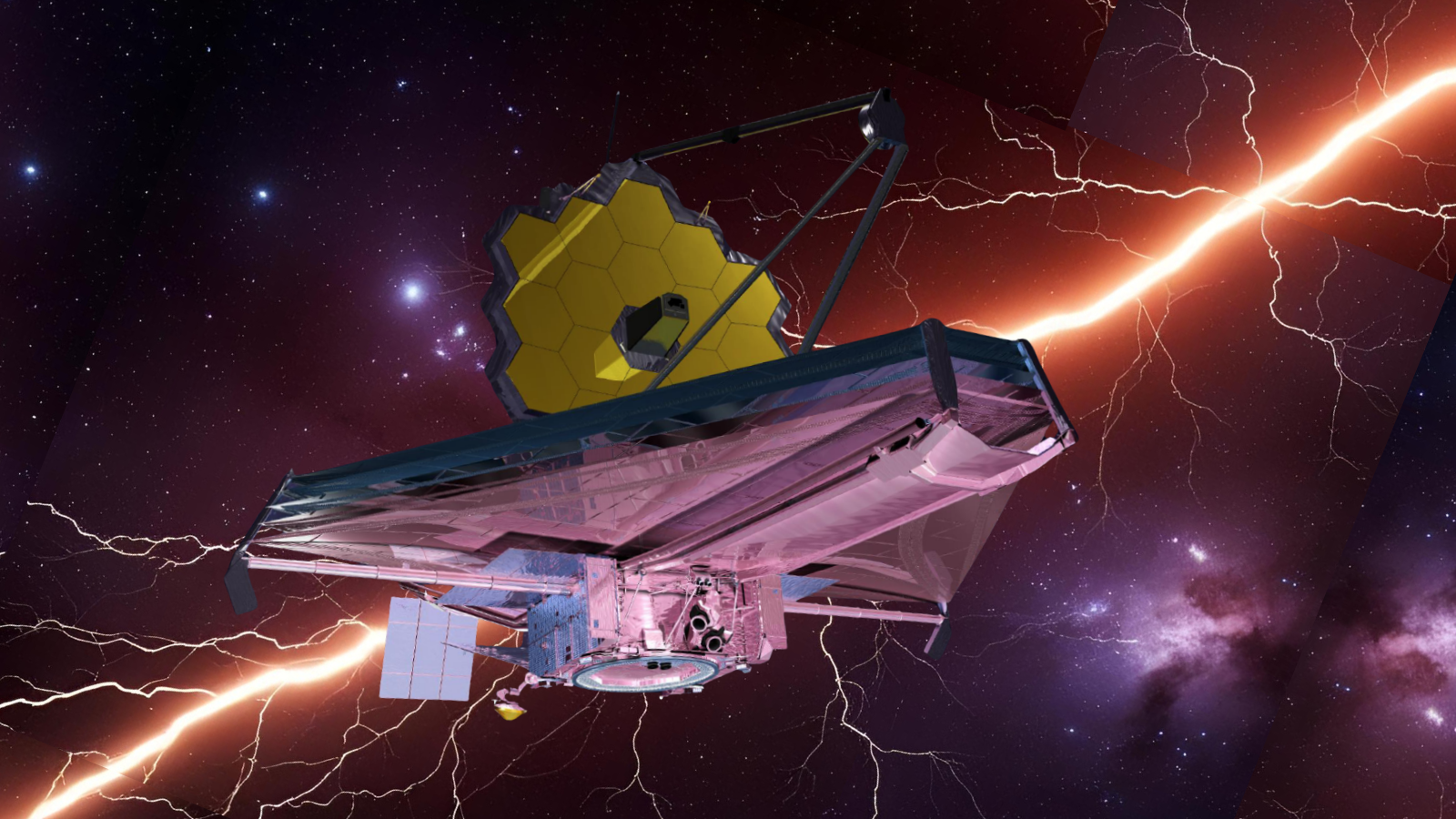Scientists prepare for their last good look at asteroid Apophis before 2029 flyby

On March 5, wave hello to the most infamous asteroid that won't slam into Earth in 2029. Scientists sure will.
Astronomers first spotted the space rock now known as Apophis in 2004. It's precisely the sort of object that most humans probably want to know about: It's awfully big and occasionally comes uncomfortably close to Earth. April 13, 2029, is one such occasion, when Apophis will skim so close to Earth that it will pass through the realm of particularly high-altitude satellites.
(It will not hit Earth. Do not panic. Carry on.)
Scientists are excited. They've calculated just how rarely an object this large passes this close to Earth. "This something that occurs about once every 1,000 years, so obviously, it is generating a lot of interest," Marina Brozović, a radar scientist at NASA's Jet Propulsion Laboratory in California, told Space.com.
Related: Huge asteroid Apophis flies by Earth on Friday the 13th in 2029, a lucky day for scientists
Space.com Collection: $26.99 at Magazines Direct
Get ready to explore the wonders of our incredible universe! The "Space.com Collection" is packed with amazing astronomy, incredible discoveries and the latest missions from space agencies around the world. From distant galaxies to the planets, moons and asteroids of our own solar system, you’ll discover a wealth of facts about the cosmos, and learn about the new technologies, telescopes and rockets in development that will reveal even more of its secrets.
The March flyby won't be nearly as stunning as the 2029 close approach; Apophis will come only one-tenth of the average distance between the Earth and the sun, more than 40 times as distant as the moon is from Earth. But scientists have big goals for Apophis' 2029 flyby, and in order to get the most out of that opportunity, they need to know as much as possible about the space rock.
And next month is their last real chance to study Apophis before the big day.
Breaking space news, the latest updates on rocket launches, skywatching events and more!
"Apophis in 2029 is going to be a really incredibly observing opportunity for us," Brozović said. "But before we get to 2029, we are preparing."
Meet Apophis
Like all near-Earth asteroids, Apophis has been rattling around the inner solar system for millennia, unnoticed by humans. Scientists believe it is more than 1,000 feet (300 meters) wide, around the height of the Eiffel Tower. It's a mix of rock and metal, according to NASA, and may be shaped a bit like a peanut, two uneven lumps smooshed together.
Astronomers spotted Apophis for the first time in 2004. The asteroid's discovery is a perfect example of planetary defense, the task dedicated to spotting asteroids around Earth, tracing their precise orbits, and determining whether they pose any risk of hitting Earth. Forewarned is forearmed, so the theory goes, and scientists hope that if they can identify a large future impactor with enough warning, humans can find a way to defend themselves.
Related: Defending Earth against dangerous asteroids: Q&A with NASA's Lindley Johnson
And for a brief moment, Apophis seemed to run nearly 3% odds of colliding with Earth on April 13, 2029. (Even the best observations have some uncertainty, and the farther ahead in time an orbit is plotted, the more that uncertainty piles up.) That early concern inspired its name, which refers to an Egyptian "demon serpent who personified evil and chaos," as NASA puts it.
Some of Apophis' flybys are perfectly mundane, others quite close. But more precise observations pushed any collision fears first to 2036, then to 2068, when scientists can't quite positively rule out a collision yet.
If Apophis and Earth ever do collide, hope you aren't around to see the day. Two asteroids of note have hit Earth in the past century or so. One flattened the Siberian forests of Tunguska in 1908, the other shattered in the skies above Chelyabinsk, Russia, in 2013.
They're nothing compared to Apophis. "Apophis is 300 times more massive than Tunguska, 5,000 times more massive than Chelyabinsk, so this is an object that certainly gets your attention," Richard Binzel, a planetary scientist at the Massachusetts Institute of Technology, told Space.com.
A natural experiment
Right now, Apophis is minding its own business like thousands of other pieces of cosmic rubble, trekking around the sun every 323.6 Earth days. Hurtling through space, the asteroid's existence is utterly uneventful.
That will change.
Nine or so more loops around the sun for Apophis and eight more for Earth will bring the objects just within about 19,800 miles (31,900 kilometers). Scientists know that Apophis will not hit Earth this time. But depending on precisely how the two rocks whiz past each other, Apophis may never look the same.
The same gravity that keeps our mundane lives anchored to Earth's surface will tug at Apophis throughout the close encounter. Scientists think there's a chance Earth's gravity will be strong enough to scatter boulders on the surface of Apophis, or perhaps even stretch the asteroid, as if it were saltwater taffy instead of rock.
How dramatic the stretch will be depends on a host of factors. First, the precise shape of Apophis. Then, its orientation during the flyby: If a broad side faces Earth, each patch feels less gravity; if a narrow head does, the asteroid is set up for a game of tug-of-war. Then, what's inside: Solid, dense rock would resist Earth's gravity more, a loose cluster of smaller boulders would give more.
Some of those characteristics scientists can study from Earth. But the interior of Apophis is impenetrable at a distance — except, perhaps, through the 2029 flyby.
"How Apophis itself responds, that's physically about how Apophis is put together. And that's something we don't know — we don't know how asteroids are put together, we've never been able to peer inside an asteroid," Binzel said. "We see the asteroid outside looking in. This is a chance where we could have the asteroid inside looking out. In other words, is the inside of the asteroid revealing itself by some measurement we can make on the outside?"
It's an incredible experiment arranged purely by the coincidences of orbits.
Related: Comet Shoemaker-Levy 9's epic crash with Jupiter in pictures
Scientists have been here once before. In 1993, astronomers spotted a new comet, dubbed Shoemaker-Levy 9 — only to realize the discovery was in fact a clutch of comet fragments, the debris of a comet that passed too close to massive Jupiter to survive the experience. But the real highlight? Those fragments were on course to slam into the planet the next year.
"The predictions for the impact of Shoemaker-Levy 9 ranged from nothing will happen — it'll be a dud, a flop — to pretty much parallel to what we actually observed," Binzel said. "There was enormous uncertainty as to what the outcome of the Shoemaker-Levy 9 impact was going to be simply because it challenged the state of our knowledge. And so the parallel with Apophis is that there is a wide range of predictions for what will happen physically to Apophis itself during the encounter: Apophis might go by the Earth and not care, or Apophis might go by the Earth and be tugged on so significantly that it seismically shakes."
But in the 1990s, astronomers rallied spacecraft and telescopes alike to gawk at a week of collisions that scarred Jupiter's clouds for a few weeks. All told, the Shoemaker-Levy 9 observations taught scientists about not just those comet fragments and the icy lump they once made up, but also about Jupiter and its atmosphere.
"I think Apophis is a lot like Comet Shoemaker-Levy 9: It's an extremely rare natural experiment that we discovered with a short lead time," Binzel said. "This is something that rarely happens. Nature is doing something amazing for us as a natural experiment, and the challenge is how do we take advantage of that natural experiment."
And Apophis observations would tell scientists about a different flavor of close encounter than Shoemaker-Levy 9, since Earth's gravity won't be strong enough to tear the rock apart.
"It won't cause this kind of big event but it is still meaningful to understand how the object can be affected by this a-little-bit-distant close flyby," Yaeji Kim, a doctoral student in aerospace engineering at the University of Auburn in Alabama, told Space.com. "There is no object which has been observed in this kind of phenomenon. From that kind of view, Apophis is a really rare case."
Related: Radar views show big asteroid 1998 OR2 tumbling in space ahead of Earth flyby (video)
Preparing for 2029
Making the most of the 2029 flyby will rely on baseline data: what scientists know about Apophis before its dramatic encounter with Earth. That means the observations gathered this year matter. Apophis will be at its closest to Earth this year on March 5 at 8:15 p.m. EST (0115 GMT on March 6).
"Closest" here is a relative term: the asteroid will remain a healthy 0.11 astronomical units (the average distance between the Earth and the sun, or about 93 million miles or 150 million km). That's nearly 44 times the distance between Earth and the moon.
But that's close enough for scientists' most powerful tool for studying asteroids from Earth: planetary radar. Take a powerful radar beam, point it at a mysterious object, then wait. Use a sensitive radio telescope to catch the echo that bounces back, run it through some complicated processing, and the result is a sonogram-like image.
"We like asteroids that come close but, you know, just enough so that we can get a really good signal and we can get really great images," Brozović said.
Related: Scientists just watched a newfound asteroid zoom by Earth. Then they saw its moon.
With good radar images, scientists can tell, for example what shape an asteroid is: potato, peanut, or even a pair of cherries bound only by gravity. Under particularly friendly circumstances, radar can detect boulders on the surface of a space rock. It also hones scientists' ability to track an asteroid's orbit.
Scientists' top priority while preparing for the 2029 Apophis flyby is sharpening their view of the rock's shape and its intricate rotations, Binzel said. "We know Apophis is in a very complicated spin state, it's sort of spinning and tumbling at the same time," he said. "The 2021 encounter gives us an epoch in time."
When scientists look to make predictions about what precisely will happen to Apophis during the 2029 encounter, they'll feed the current best wisdom of the object's shape and twisted rotation into models — but the resulting predictions will only be as robust as the data.
Related: Losing Arecibo's giant dish leaves humans more vulnerable to space rocks, scientists say
Inconveniently, Earth lost its most powerful planetary radar system in December, when Arecibo Observatory's radio telescope in Puerto Rico collapsed. Each radar system has its strengths and weaknesses, and Arecibo would have shone during this preparatory close approach. Without it, scientists aren't sure how much they'll be able to improve existing radar observations of Apophis.
But they'll try, thanks to the planetary radar system at NASA's Goldstone Deep Space Communications Complex in California, which is due to study Apophis from March 3 to March 14 to cover this flyby. Researchers also hope to use the Green Bank Telescope in West Virginia to catch the echos, rather than having to switch Goldstone's settings back and forth between send and receive; if they can use two telescopes, the data will be sharper.
"Arecibo was really a powerhouse, the most powerful radar on the planet, so we just can't make that up," Brozović said. "But we're still going to get good data."
Email Meghan Bartels at mbartels@space.com or follow her on Twitter @meghanbartels. Follow us on Twitter @Spacedotcom and on Facebook.

Meghan is a senior writer at Space.com and has more than five years' experience as a science journalist based in New York City. She joined Space.com in July 2018, with previous writing published in outlets including Newsweek and Audubon. Meghan earned an MA in science journalism from New York University and a BA in classics from Georgetown University, and in her free time she enjoys reading and visiting museums. Follow her on Twitter at @meghanbartels.

